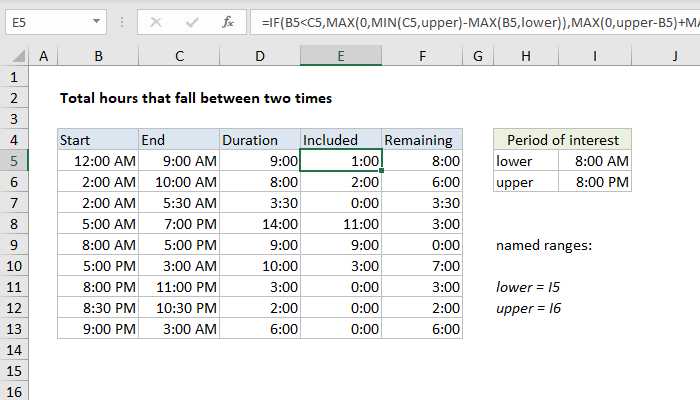

Instead of subtracting break time from work time, we add together two work times. Instead of logging work and break time separately, this version captures two separate in/out times for a single shift.įor this layout, the formula used in F5 is: =MOD(C5-B5,1)+MOD(E5-D5,1) The screenshot below shows an alternative format to capture time worked. If you don't use the brackets, Excel will simply "roll over" when the duration hits 24 hours (like a clock). For example, with start time of 9:00 AM and an end time of 3:00 PM, you can simply use this formula: (3:00 PM - 9:00 AM) 24 (.625. The square bracket syntax tells Excel to display hour durations of greater than 24 hours. To calculate hours between times, you can simply subtract the start time from the end time when both times are in the same day.

In cases where calculated time exceeds 24 hours, you may want to use a custom format like :mm. By using MOD with a divisor of 1, positive results are unchanged, but negative results (which occur when start time is greater than end time) are "flipped" to get a correct duration.įor more details, see: How to calculate number of hours between two times Formatting time durations Knowing this, you can simply subtract the start time (Clock In) from the end time (Clock Out) to find the time worked. This formula uses the the MOD function to handle times that cross a day boundary (midnight). Next, break time is subtracted from work time to get "net work hours". This is done to calculate both work time and break time. At the core, this formula subtracts start time from end time to get duration in hours.


 0 kommentar(er)
0 kommentar(er)
